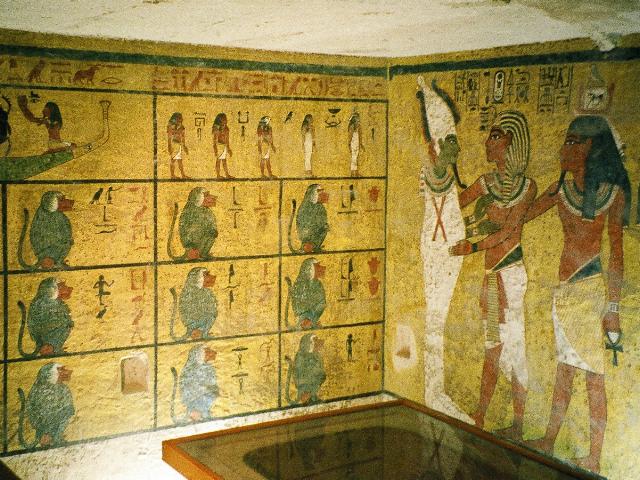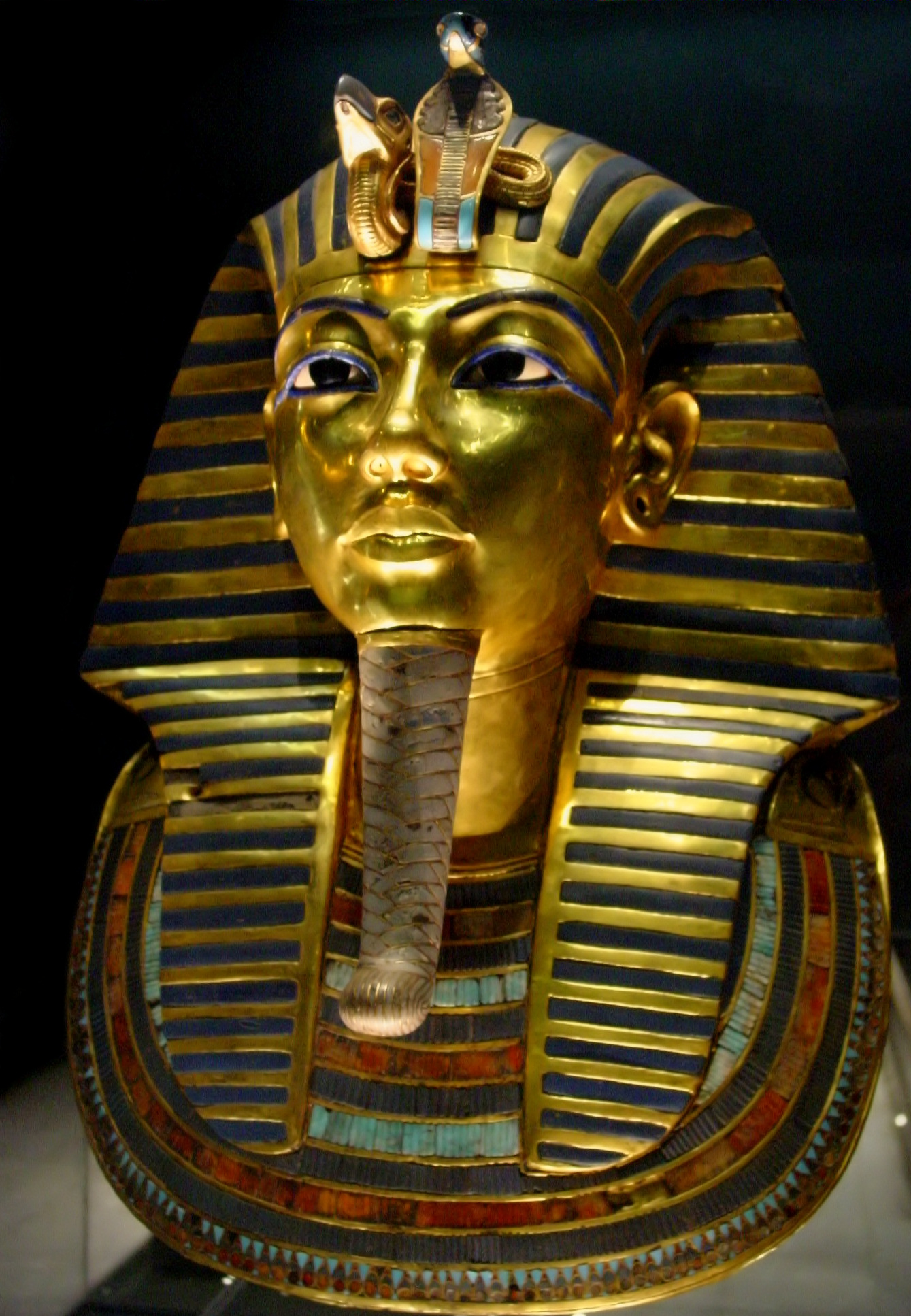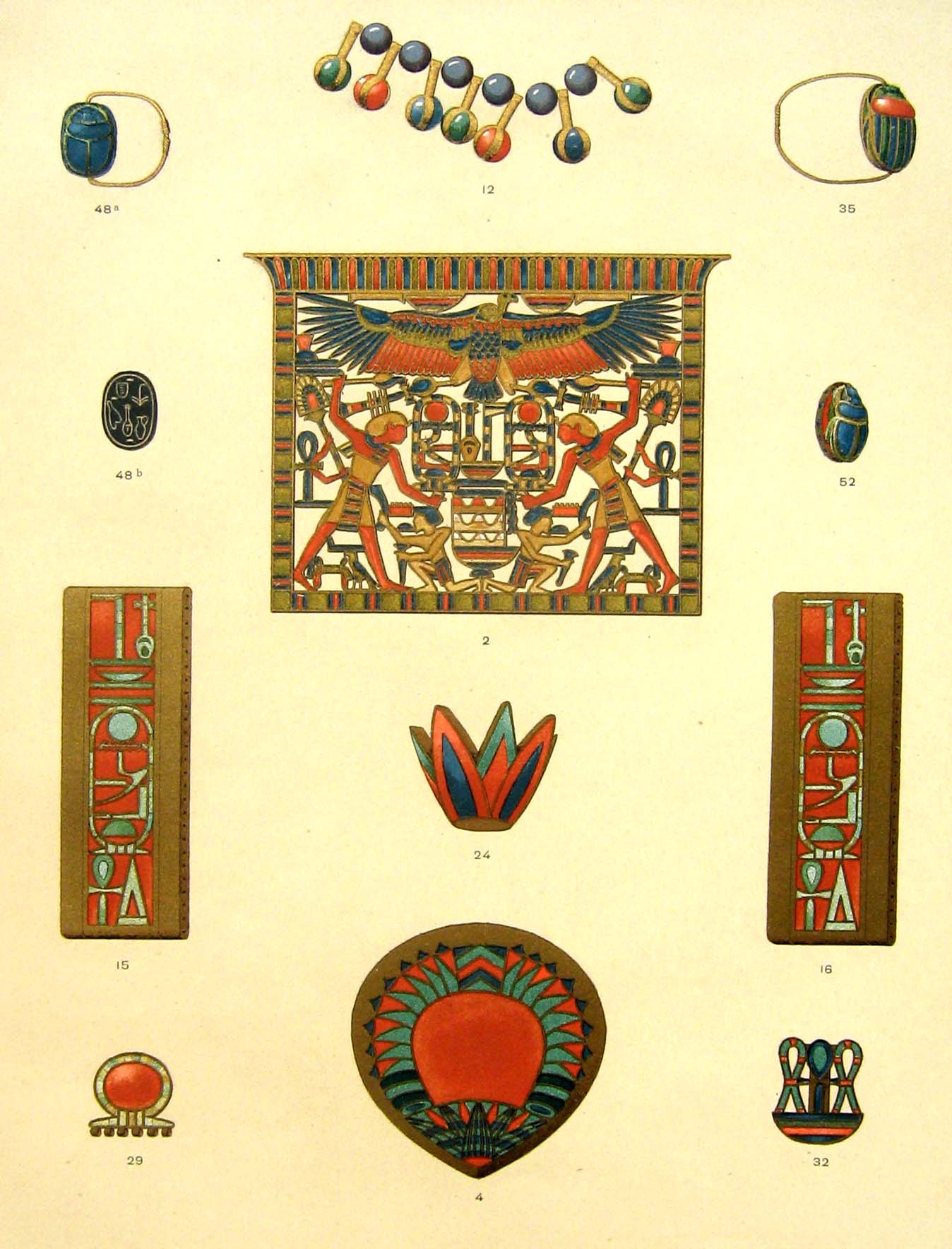|
KV55 Sarcophagus (Cairo Museum)
KV55 is a tomb in the Valley of the Kings in Egypt. It was discovered by Edward R. Ayrton in 1907 while he was working in the Valley for Theodore M. Davis. It has long been speculated, as well as much disputed, that the body found in this tomb was that of the famous king, Akhenaten, who moved the capital to Akhetaten (modern-day Amarna). The results of genetic and other scientific tests published in February 2010 have confirmed that the person buried there was both the son of Amenhotep III and the father of Tutankhamun. Furthermore, the study established that the age of this person at the time of his death was consistent with that of Akhenaten, thereby making it almost certain that it is Akhenaten's body.Hawass, Zahi et al. "Ancestry and Pathology in King Tutankhamun's Family" ''The Journal of the American Medical Association'' (2010) p. 644 However, a growing body of work soon began to appear to dispute the assessment of the age of the mummy and the identification of KV55 as Akhena ... [...More Info...] [...Related Items...] OR: [Wikipedia] [Google] [Baidu] |
Amarna
Amarna (; ar, العمارنة, al-ʿamārnah) is an extensive Egyptian archaeological site containing the remains of what was the capital city of the late Eighteenth Dynasty. The city was established in 1346 BC, built at the direction of the Pharaoh Akhenaten, and abandoned shortly after his death in 1332 BC. The name that the ancient Egyptians used for the city is transliterated in English as Akhetaten or Akhetaton, meaning " the horizon of the Aten".David (1998), p. 125 The site is on the east bank of the Nile River, in what today is the Egyptian province of Minya. It is about south of the city of al-Minya, south of the Egyptian capital, Cairo, and north of Luxor (site of the previous capital, Thebes). The city of Deir Mawas lies directly to its west. On the east side of Amarna there are several modern villages, the chief of which are l-Till in the north and el-Hagg Qandil in the south. Activity in the region flourished from the Amarna Period until the later Roman era ... [...More Info...] [...Related Items...] OR: [Wikipedia] [Google] [Baidu] |
Howard Carter
Howard Carter (9 May 18742 March 1939) was a British archaeologist and Egyptologist who discovered the intact tomb of the 18th Dynasty Pharaoh Tutankhamun in November 1922, the best-preserved pharaonic tomb ever found in the Valley of the Kings. Early life Howard Carter was born in Kensington on 9 May 1874, the youngest child (of eleven) of artist and illustrator Samuel John Carter and Martha Joyce Carter (). His father helped train and develop his artistic talents. Carter spent much of his childhood with relatives in the Norfolk market town of Swaffham, the birthplace of both his parents. Receiving only limited formal education at Swaffham, he showed talent as an artist. The nearby mansion of the Amherst family, Didlington Hall, contained a sizable collection of Egyptian antiques, which sparked Carter's interest in that subject. Lady Amherst was impressed by his artistic skills, and in 1891 she prompted the Egypt Exploration Fund (EEF) to send Carter to assist an Amherst ... [...More Info...] [...Related Items...] OR: [Wikipedia] [Google] [Baidu] |
Flail
A flail is an agricultural tool used for threshing, the process of separating grains from their husks. It is usually made from two or more large sticks attached by a short chain; one stick is held and swung, causing the other (the swipple) to strike a pile of grain, loosening the husks. The precise dimensions and shape of flails were determined by generations of farmers to suit the particular grain they were harvesting. For example, flails used by farmers in Quebec to process wheat were generally made from two pieces of wood, the handle being about long by in diameter, and the second stick being about long by about in diameter, with a slight taper towards the end. Flails for other grains, such as rice or spelt, would have had different dimensions. Flails have generally fallen into disuse in many nations because of the availability of technologies such as combine harvesters that require much less manual labour. But in many places, such as Minnesota, wild rice can only be harv ... [...More Info...] [...Related Items...] OR: [Wikipedia] [Google] [Baidu] |
Shepherd
A shepherd or sheepherder is a person who tends, herds, feeds, or guards flocks of sheep. ''Shepherd'' derives from Old English ''sceaphierde (''sceap'' 'sheep' + ''hierde'' 'herder'). ''Shepherding is one of the world's oldest occupations, it exists in all parts of the globe, and it is an important part of Pastoralism, pastoralist animal husbandry. Because of the ubiquity of the profession, many religions and cultures have symbolic or metaphorical references to the shepherd profession. For example, Jesus called himself the Good Shepherd, and ancient Greek mythologies highlighted shepherds such as Endymion (mythology), Endymion and Daphnis. This symbolism and shepherds as characters are at the center of pastoral literature and art. Origins Shepherding is among the oldest occupations, beginning some 5,000 years ago in Asia Minor. Sheep were kept for their milk, sheep meat, meat and especially their wool. Over the next thousand years, sheep and shepherding spread throughout ... [...More Info...] [...Related Items...] OR: [Wikipedia] [Google] [Baidu] |
Uraeus
The Uraeus (), or Ouraeus (Ancient Greek: , ; Egyptian: ', "rearing cobra"), ''(plural: Uraei)'' is the stylized, upright form of an Egyptian cobra, used as a symbol of sovereignty, royalty, deity and divine authority in ancient Egypt. Symbolism The Uraeus is a symbol for the goddess Wadjet.Egyptian-Gods She was one of the earliest Egyptian deities and was often depicted as a cobra, as she is the serpent goddess. The center of her cult was in Per-Wadjet, later called Buto by the Greeks. She became the patroness of the Nile Delta and the protector of all of Lower Egypt. The pharaohs wore the uraeus as a head ornament: either with the body of Wadjet atop the head, or as a crown encircling the head; this indicated Wadjet's protection and reinforced the pharaoh's claim over the land. In whatever manner that the Uraeus was displayed upon the pharaoh's head, it was, in effect, part of the pharaoh's crown. The pharaoh was recognized only by wearing the Uraeus, which conveye ... [...More Info...] [...Related Items...] OR: [Wikipedia] [Google] [Baidu] |
Georges Émile Jules Daressy
Georges Émile Jules Daressy (19 March 1864 – 28 February 1938) was a French Egyptologist. He worked from 1887 in the Egyptian Museum in Cairo. Amongst his responsibilities was the museum's move from Bulaq to Giza in 1891, and then to the present-day location in 1901. He is an author of the general catalog of the museum. He was the first Egyptologist to publish (1901) and translate (1906) the ''Akhmim wooden tablets.'' He excavated throughout Egypt, most notably in the Valley of the Kings, Medinet Habu, Karnak, Luxor, Malkata and Abydos Abydos may refer to: *Abydos, a progressive metal side project of German singer Andy Kuntz * Abydos (Hellespont), an ancient city in Mysia, Asia Minor * Abydos (''Stargate''), name of a fictional planet in the '' Stargate'' science fiction universe .... Publications * , Le Caire, 1893. * , Le Caire, 1897. * , 1898. * , Le Caire : , 1901, (). * , Le Caire : , 1902, (). * , Le Caire : , 1903, (). * , Le Caire : Imprimerie de l'Inst. Franc̜ais d ... [...More Info...] [...Related Items...] OR: [Wikipedia] [Google] [Baidu] |
KV55 Sarcophagus (Cairo Museum)
KV55 is a tomb in the Valley of the Kings in Egypt. It was discovered by Edward R. Ayrton in 1907 while he was working in the Valley for Theodore M. Davis. It has long been speculated, as well as much disputed, that the body found in this tomb was that of the famous king, Akhenaten, who moved the capital to Akhetaten (modern-day Amarna). The results of genetic and other scientific tests published in February 2010 have confirmed that the person buried there was both the son of Amenhotep III and the father of Tutankhamun. Furthermore, the study established that the age of this person at the time of his death was consistent with that of Akhenaten, thereby making it almost certain that it is Akhenaten's body.Hawass, Zahi et al. "Ancestry and Pathology in King Tutankhamun's Family" ''The Journal of the American Medical Association'' (2010) p. 644 However, a growing body of work soon began to appear to dispute the assessment of the age of the mummy and the identification of KV55 as Akhena ... [...More Info...] [...Related Items...] OR: [Wikipedia] [Google] [Baidu] |
Pectoral (Ancient Egypt)
The pectorals of ancient Egypt were a form of jewelry, often represented as a brooch. These were mostly worn by richer people and the pharaoh. One type is attached with a nah necklace, meant to be suspended from the neck but to lie upon the breast. Statuary from the Old Kingdom onwards shows this form. A later form was attached as a brooch, with the thematic, iconographic function and statement outweighing its actual use as a piece of jewellery for adornment. The thematic statements were typically about the pharaoh or statements of ancient Egyptian mythology and culture. They are usually of gold with cloisonné inlays of gemstones. Ancient Egyptian definition of pectoral The many determinatives for ''pectoral'' are not portrayed in the Gardiner's Sign List. However, one of the 10 words for 'pectoral', or 'collar' uses the Usekh collar determinative, S11, the ''"collar necklace"'' S11. However a similar hieroglyph for the verb "to collar", "to net" shows the relationship betwe ... [...More Info...] [...Related Items...] OR: [Wikipedia] [Google] [Baidu] |
Canopic Jar (07
Canopus (, ; grc-gre, Κάνωπος, ), also known as Canobus ( grc-gre, Κάνωβος, ), was an ancient Egyptian coastal town, located in the Nile Delta. Its site is in the eastern outskirts of modern-day Alexandria, around from the center of that city. Canopus was located on the western bank at the mouth of the westernmost branch of the Delta – known as the Canopic or Heracleotic branch. It belonged to the seventh Egyptian Nome, known as ''Menelaites'', and later as ''Canopites'', after it. It was the principal port in Egypt for Greek trade before the foundation of Alexandria, along with Naucratis and Heracleion. Its ruins lie near the present Egyptian town of Abu Qir. Land in the area of Canopus was subject to rising sea levels, earthquakes, tsunamis, and large parts of it seem to have succumbed to liquefaction sometime at the end of the 2nd century BC. The eastern suburbs of Canopus collapsed, their remains being today submerged in the sea, with the western suburbs ... [...More Info...] [...Related Items...] OR: [Wikipedia] [Google] [Baidu] |
Ostracon
An ostracon (Greek: ''ostrakon'', plural ''ostraka'') is a piece of pottery, usually broken off from a vase or other earthenware vessel. In an archaeological or epigraphical context, ''ostraca'' refer to sherds or even small pieces of stone that have writing scratched into them. Usually these are considered to have been broken off before the writing was added; ancient people used the cheap, plentiful and durable broken pieces of pottery around them as convenient places to place writing for a wide variety of purposes, mostly very short inscriptions, but in some cases very long. Ostracism In Classical Athens, when the decision at hand was to banish or exile a certain member of society, citizen peers would cast their vote by writing the name of the person on the shard of pottery; the vote was counted and, if unfavorable, the person was exiled for a period of ten years from the city, thus giving rise to the term ''ostracism''. Broken pottery shards were also used for anal hygi ... [...More Info...] [...Related Items...] OR: [Wikipedia] [Google] [Baidu] |
KV62
The tomb of Tutankhamun, also known by its tomb number, KV62, is the burial place of Tutankhamun (reigned c. 1334–1325 BC), a pharaoh of the Eighteenth Dynasty of ancient Egypt, in the Valley of the Kings. The tomb consists of four chambers and an entrance staircase and corridor. It is smaller and less extensively decorated than other Egyptian royal tombs of its time, and it probably originated as a tomb for a non-royal individual that was adapted for Tutankhamun's use after his premature death. Like other pharaohs, Tutankhamun was buried with a wide variety of funerary objects and personal possessions, such as coffins, furniture, clothing and jewellery, though in the unusually limited space these goods had to be densely packed. Robbers entered the tomb twice in the years immediately following the burial, but Tutankhamun's mummy and most of the burial goods remained intact. The tomb's low position, dug into the floor of the valley, allowed its entrance to be hidden by debris de ... [...More Info...] [...Related Items...] OR: [Wikipedia] [Google] [Baidu] |
Ramesses II
Ramesses II ( egy, wikt:rꜥ-ms-sw, rꜥ-ms-sw ''Rīʿa-məsī-sū'', , meaning "Ra is the one who bore him"; ), commonly known as Ramesses the Great, was the third pharaoh of the Nineteenth Dynasty of Egypt. Along with Thutmose III he is often regarded as the greatest, most celebrated, and most powerful pharaoh of the New Kingdom of Egypt, New Kingdom, itself the most powerful period of Ancient Egypt. The name ''Ramesses'' is pronounced variously . Transliteration of Ancient Egyptian, Other spellings include Rameses and Ramses; in grc-koi, Ῥαμέσσης, Rhaméssēs. He is known as Ozymandias in Greek sources ( grc-koi, Ὀσυμανδύας, translit=Osymandýas), from the first part of Ramesses's regnal name, , "The Maat of Ra is powerful, Chosen of Ra". His successors and later Egyptians called him the "Great Ancestor". At age fourteen, he was appointed prince regent by his father, Seti I. Most Egyptologists today believe he assumed the throne on 31 May 1279 BC, bas ... [...More Info...] [...Related Items...] OR: [Wikipedia] [Google] [Baidu] |
.jpg)







